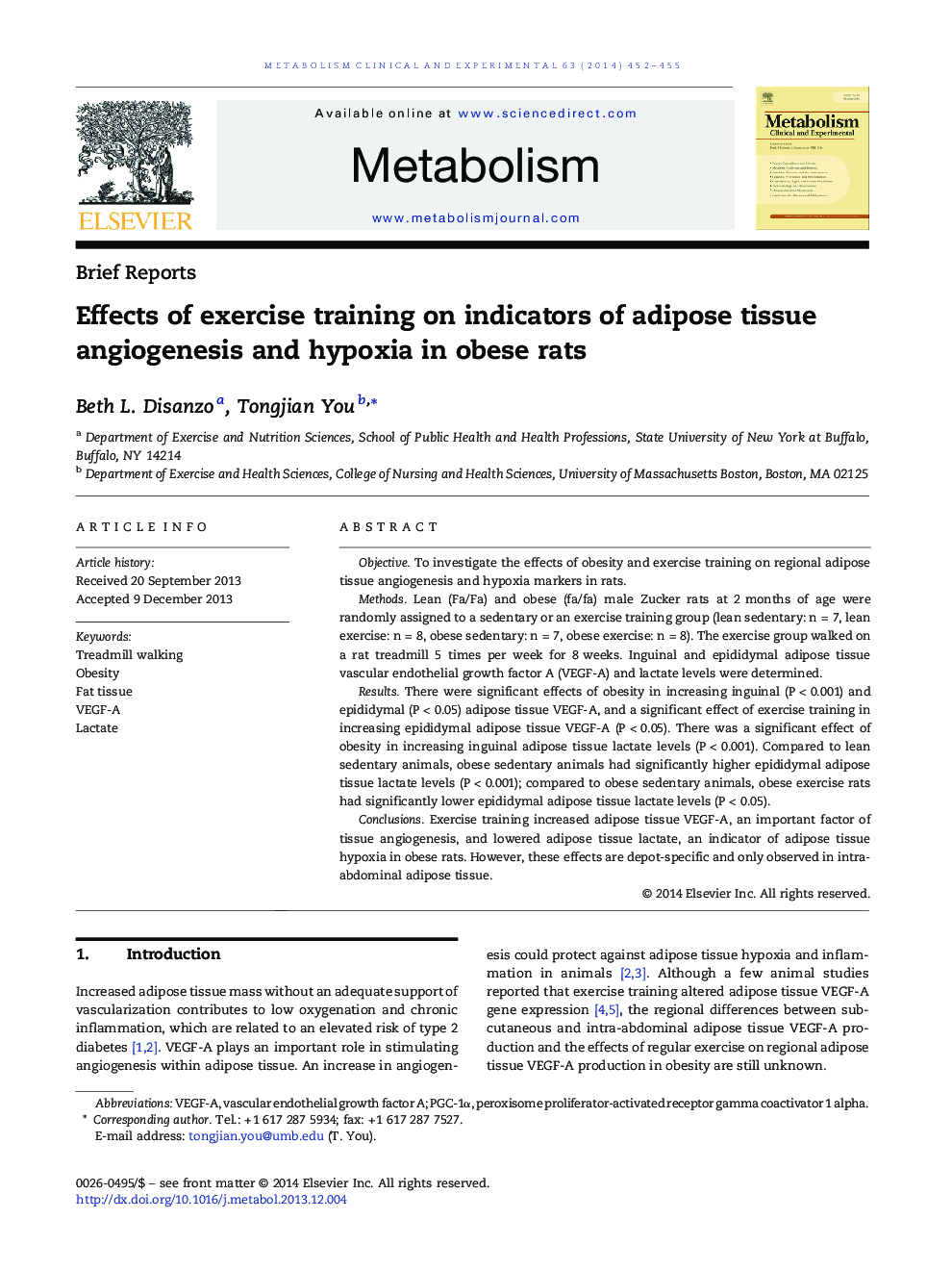| Article ID | Journal | Published Year | Pages | File Type |
|---|---|---|---|---|
| 5903421 | Metabolism | 2014 | 4 Pages |
ObjectiveTo investigate the effects of obesity and exercise training on regional adipose tissue angiogenesis and hypoxia markers in rats.MethodsLean (Fa/Fa) and obese (fa/fa) male Zucker rats at 2 months of age were randomly assigned to a sedentary or an exercise training group (lean sedentary: n = 7, lean exercise: n = 8, obese sedentary: n = 7, obese exercise: n = 8). The exercise group walked on a rat treadmill 5 times per week for 8 weeks. Inguinal and epididymal adipose tissue vascular endothelial growth factor A (VEGF-A) and lactate levels were determined.ResultsThere were significant effects of obesity in increasing inguinal (P < 0.001) and epididymal (P < 0.05) adipose tissue VEGF-A, and a significant effect of exercise training in increasing epididymal adipose tissue VEGF-A (P < 0.05). There was a significant effect of obesity in increasing inguinal adipose tissue lactate levels (P < 0.001). Compared to lean sedentary animals, obese sedentary animals had significantly higher epididymal adipose tissue lactate levels (P < 0.001); compared to obese sedentary animals, obese exercise rats had significantly lower epididymal adipose tissue lactate levels (P < 0.05).ConclusionsExercise training increased adipose tissue VEGF-A, an important factor of tissue angiogenesis, and lowered adipose tissue lactate, an indicator of adipose tissue hypoxia in obese rats. However, these effects are depot-specific and only observed in intra-abdominal adipose tissue.
